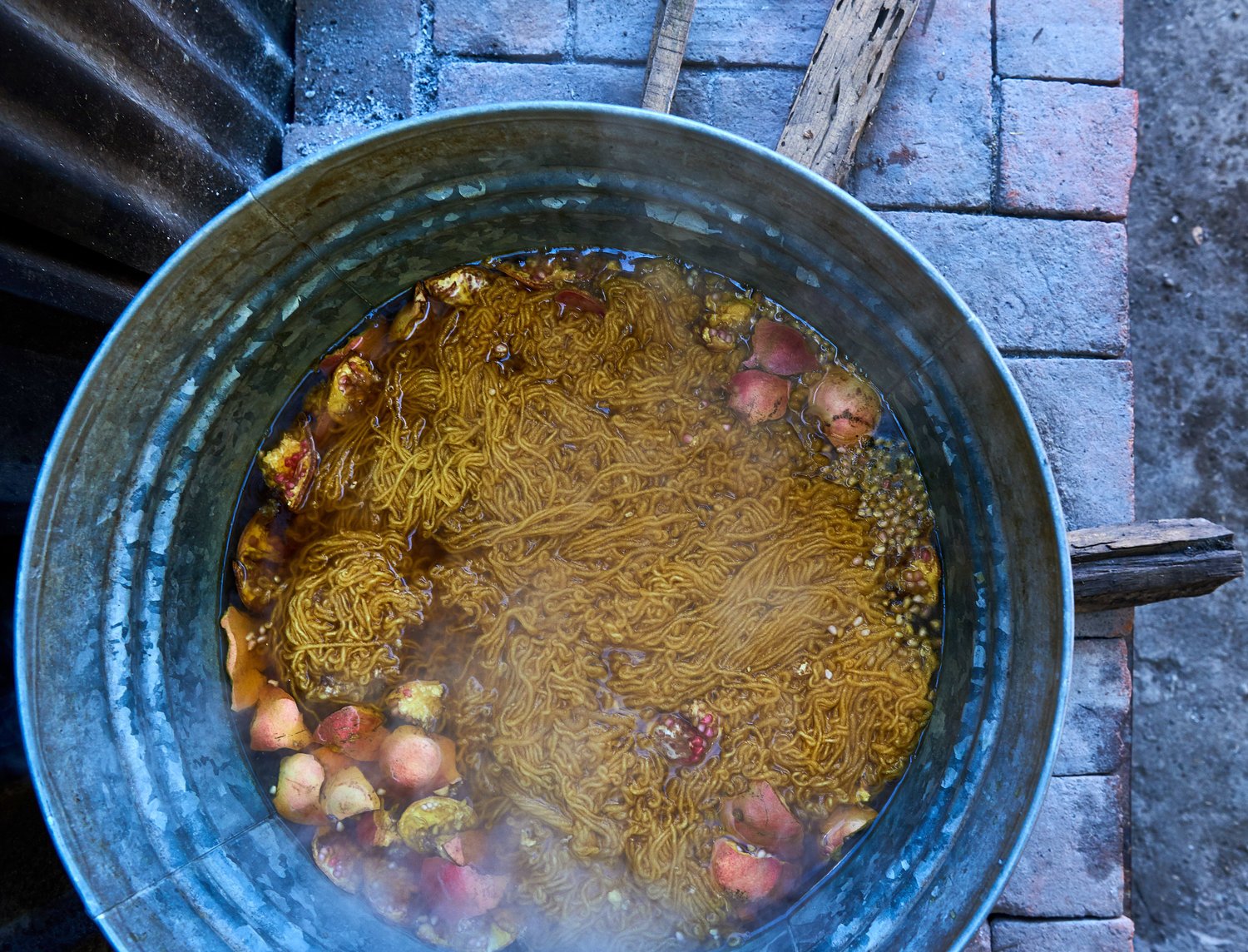Artisan Casa Viviana featured in
For four generations, the rich smell of honey and burning wood has filled the quiet street of the Oaxacan town of Teotitlán del Valle where Casa Viviana sits. Behind the modest brick-front building, Doña Viviana Alávez is the matriarch who presides over the crafting of elaborate, ceremonial beeswax candles that the Mexican village is known for. At 74, Doña Viviana is both a trailblazer and the guardian of this timeless artisanal tradition whose origins lie in an ancient wedding ritual.
The candles are known as “velas tradicionales de concha,” for the seashell-inspired shapes of their ornamentation. “They are part of a great symbol of prosperity and abundance for the new couple,” Hernández Mendoza explained.
This Oaxacan Family Is Breaking the Mold of a Centuries-Old Candle-Making Tradition
by XÓCHITL GONZALEZ
Flat disks are attached to spikes on branches of the Huizache tree and left on the roof for a minimum of 15 days until they are bleached white by the sun.
Doña Viviana Alávez, the proprietor of Casa Viviana made her first candle at the age of eight, under her grandmother’s tutelage.
Artisan Vida Nueva featured in
In the Zapotec village of Teotitlán del Valle, in Oaxaca State, Mexico, the rug-weaver Pastora Asunción Gutierrez Reyes, 46, graciously welcomes me into the open courtyard of her home. She is in the midst of pulverizing cochineal, a parasitic insect, to create a red dye. On an open fire nearby, pomegranate skins are simmering in a pot of water. All the dye recipes Gutierrez uses belong to her great-grandmother. The patterns and symbols that she weaves into colorful rugs are pre-Hispanic representations of the cycles of life and the natural world.
Gutierrez is an advocate for change in Teotitlán del Valle. She is largely responsible for bringing herself and the women in her village into the modern era using the traditional crafts and methods that have sustained them for generations.
Most of the 5,500 or so people in Teotitlán del Valle are involved in rug-weaving. And among them, Gutierrez is a powerful force.
A Rug-Weaver Searching for Social Justice in Oaxaca
by DEBORAH NEEDLEMAN
Above: Vida Nueva cooperative members and rug weavers Pastora Asunción Gutierrez Reyes and Doña Isabel Contreras in Contreras’s home. Image: Gentl and Hyers
Some of Gutierrez’s rugs, photographed in her workshop by Deborah Needleman.
Image: Deborah Needleman
Some of the natural dyes used are: indigo for blue, pomegranate peel for yellow, grana cochinilla for reds and oranges, and Brazil wood for pink.
Image: Gentl and Hyers
Artisan Vida Nueva featured in
I had no idea that meeting a group of women weavers in a small dusty town in Oaxaca, Mexico would have such an impact. That I would be so charged and changed by the encounter.
Oaxaca is renowned for its artisan craft, and the town of Teotitlán del Valle in particular for its weaving, so I knew their work would be beautiful, and it is. But more than the aesthetic beauty, or even the integrity of their creative process that blends ancient tradition with their own artistic expression, these women have shown incredible courage and conviction to make a new life for themselves in the face of great challenges, and to transform their community in the process.
To visit Vida Nueva Women’s Cooperative is to be welcomed into the Gutiérrez Reyes family home with humility and generosity.
A new life: Vida Nueva Women's Cooperative Oaxaca
by CLARE YAZBEK
Caption here
Image: Clare Yazbek
Vida Nueva cooperative co-founder and leader Pastora Gutiérrez Reyes
Image: Clare Yazbek












